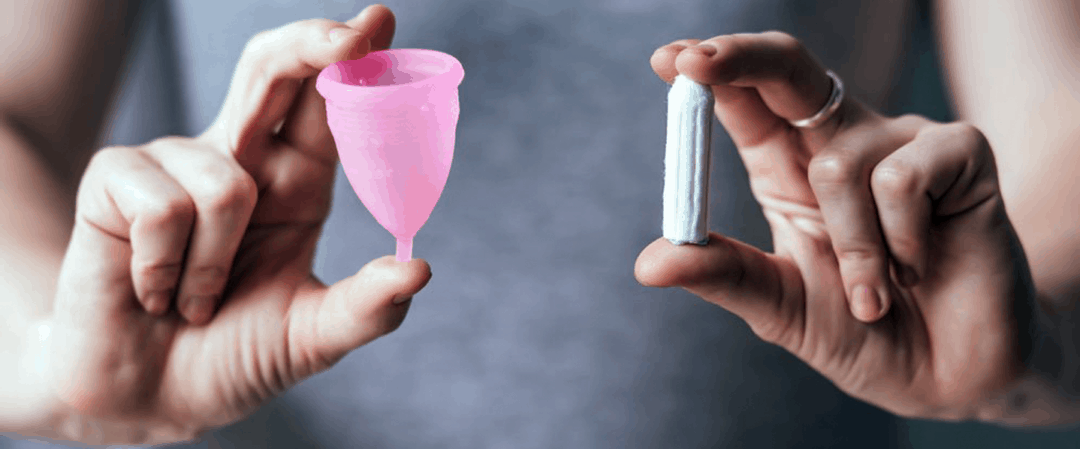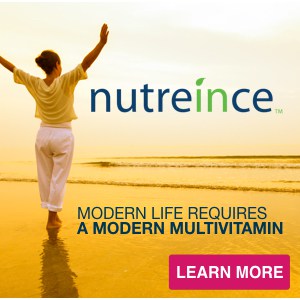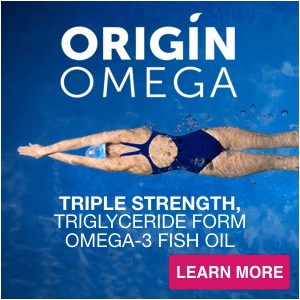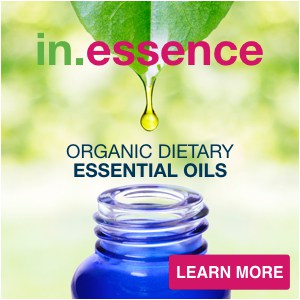Get ready to buckle up and hold on tight everyone, because we’re about to ride into some pretty intimate territory here! And today, it’s for women only. However, if you’re an inquisitive guy and want to enlighten yourself on women issues, feel free to stay with us (just don’t say we didn’t warn you). You can always send this information to that special lady in your life, believe us, she will benefit enormously from the information we are about to share. No matter how shocking it may be, today, we’re about to uncover the truth about your feminine care products for that certain “time of the month”, and the potential health risks that they might be causing to you and your menstrual cycle. All strapped in? Then let’s get the show on the road!
Profiting from Nature
Like it or not, our menstrual cycle is an opportunity that’s been ripe for business for decades. In the US alone, more than 100 million women use tampons or pads. In fact, feminine products are part of an enormous $5.9 billion dollar industry, making up a large portion of the $35.4 billion dollar worldwide industry. [1] By the year 2022, the feminine hygiene market is expected to increase to $42.7 billion. [2] A typical woman with a heavy period can spend up to $100 dollars per year on feminine products. The money is practically flying out of our pockets! But as is typical of many industries, the feminine hygiene market is fraught with misinformation and, potential danger. Yes, you read that right- DANGER. Here’s what you may, or may not, know about feminine care products, and why the product you’re using (even if it’s organic!) might just be doing more harm than good.
Who’s Watching, Anyway?
When it comes to feminine hygiene, the FDA’s oversight varies in terms of regulation. Tampons and pads, for instance are both considered a Class II Medical Device, which do require regulation, but with some drawbacks. [3] While manufacturers must provide the FDA with data on the design, processing, and materials for their products, the results go directly from company itself to the FDA, and cannot be seen by the public. And since women’s personal care products are Class II Medical Devices, the FDA also does NOT require these companies to disclose any added ingredients (such as chemicals, colors, scents etc.) on the packaging. In other words, we are completely in the dark when it comes to the manufacturing data, materials or added ingredients of our tampons and pads. [4]
Let that one sink in for a moment. If supplements, food and drinks, and even shampoo require this kind of disclosure, and must always include this information on the label, shouldn’t the things as intimate as tampons and pads be labeled too? According to Alexandra Scranton, the director of science and research for Women’s Voices for the Earth, a non-profit organization dedicated to safer women’s personal care items and ingredient disclosure, such intimacy is not without its risks. “Vaginal tissue isn’t like other skin. It’s covered in mucous membranes, it’s very permeable. It’s a direct route to your reproductive organs. We need to be really careful of these products.” [5]
And that is only the beginning…
What’s Really in Your Products?
Next, you need to know what some of these added ingredients are, and why they are a cause for concern. Whether it’s a tampon or a pad, you may want to reconsider the product you’re using after reading about what goes into them.
Up to the late 1990’s the large majority of brands would bleach their products with elemental chorine gas in order for them to appear white. This chlorine based bleaching process can create numerous, toxic byproducts, including:
- Dioxin
- Trihalomethane and other Disinfection-by-Products (DBPs)
In response to the growing concern over the dangers of these byproducts, elemental chlorine gas is no longer used. According to the FDA, sanitary products are now bleached using either an Elemental Chlorine-Free (ECF) or Totally Chlorine-Free (TCF) bleaching process. However, while totally chlorine-free (TCF) bleaching IS completely chlorine and dioxin free, elemental chlorine-free (ECF) bleaching is NOT! ECF bleaching actually still uses a form of chlorine called chlorine dioxide, and can still generate low, but significant amounts of dioxins. An FDA Office of Women’s Health-sponsored study published in 2005 proved that dioxins are still very present in the US feminine product market. The study examined dioxin levels in seven brands of tampons, and found statistically significant levels of dioxins in several brands. [6]
The bottom line is the only true guarantee that your tampons or pads are completely free of dioxins is to purchase products that use a totally chlorine-free (TCF) bleaching method. Additionally, bleaching a personal product such as a tampon or pad does not mean it’s sterile – all it does is whiten it.
The Pesticide and GMO Issue
Yep, you read that correctly! As if dioxins aren’t bad enough, it turns out that that soft (now white) cotton or cotton/rayon blend that our tampons and pads are made from pesticides and insecticides soaked, genetically modified (GMO) cotton. In fact, according to Pesticide Action Network, “Conventionally grown cotton uses more insecticides than any other single crop. Nearly $2.6 billion worth of pesticides are sprayed on cotton fields each year — accounting for more than 10% of total pesticide use and nearly 25% of insecticides use worldwide.”[7] Crazy, right? And unlike other cotton based products you may have in your home such as clothing, or towels and sheets, which can be washed before coming into contact with our skin, feminine hygiene products are used right out of the package and immediately put in contact with the delicately thin tissue of the female reproductive system.
Believe it or not, in addition to the dioxins, toxic pesticide residues and GMO’s there are also other potentially harmful ingredients that are commonly found in feminine products, such as Rayon and Rayon Fibers, and plastic chemicals like:
- BPA and BPS
- Phthalates
- DEHP
- Artificial Colors and Fragrances
- Polyester (in some brands)
- Adhesives
- Polyethylene (PET)
- Polypropylene and Propylene Glycol (PEG)
If you are still on the fence about some of these ingredients, allow us to shed some light on what they are, and why they should be on your “no fly” list.
Dioxin
Dioxin, is a type of “organochlorine” akin to DDT, PCB’s, and Agent Orange, all of which having insidious links to cancer (especially breast cancer), immune system suppression, endometriosis, pelvic inflammatory disease, and reproductive disorders. [8] As we discussed earlier, unless the manufacture is using a totally chlorine-free (TCF) bleaching method (which most don’t), trace amounts of dioxins that are left over and are coming into contact with the vagina, which is one of the most absorbent tissues in female body. Dr. Philip Tierno, the director of clinical microbiology and diagnostic immunology at New York University Medical Center is one of the leading experts when it comes to the health risks of commercial tampon use. According to him, trace amounts are nothing to sneeze at. “Sure, one tampon is trace, but consider the menstrual lifetime of a woman. They use approximately 12,000 tampons in a lifetime. That means 12,000 exposures of dioxin…five, six, seven times a day. That’s a lot of dioxin absorbed directly through the vagina. It goes directly into the blood.” [9]
Consistency is key here. Even though you would only be exposed to a small, but detectable amount dioxin through the use of one tampon, you’ve got to consider the number of times you change them throughout the course of one menstrual cycle per month. When you do the math, suddenly the amounts of those trace amounts start to add up! While the FDA insists that low levels of dioxin exposure, like that from tampons, is safe; the EPA states there is essentially no acceptable level of dioxin exposure. In fact, according to the EPA, dioxin exposure causes cancer in lab animals and poses a high risk for humans as well – why take the risk?
Rayon and Rayon Fibers
We’re combining these two together, as the fibers come as a result of Rayon. Rayon is a synthetic fiber derived from wood pulp. After bleaching it, you can get dioxin, which we just covered, and Rayon fibers. During the bleaching process, Rayon will leave behind sticky fibers that can irritate and damage the vagina, causing ulcerations and peeling of the mucus membrane.
What’s really devious, however, is Rayon’s tie to a rare but potentially fatal disease known as Toxic Shock Syndrome (TSS). Although it primarily strikes tampon users under the age of thirty, it should be left un-ignored by women of all ages. While a bacterial toxin mainly causes it, it has been associated in the past with tampon use, as frequent use can increase the risk of developing TSS. In the 1980’s it became an infamous epidemic, with the Centers for Disease Control and Prevention reporting up to nearly 814 cases, including 38 deaths. As a result, many tampons were pulled off of shelves. The public was made aware of the potential risks of tampon use as a result, and for the lowest absorbency to be used should women decide to use them. As of today, the CDC has noted a significant drop of menstrual related TSS cases, although the number of TSS cases from other causes still remains the same. Much of this change is due to manufacturers making their product’s absorption as low as possible, and from the labeling of absorbency terms remaining consistent across all brands.
And a finally, a notable contribution to this change is the removal of three out of four TSS-associated ingredients, which were polyester, carboxymethylcellulose, and polacrylate rayon. But the fourth ingredient, viscose rayon (a highly absorbent form of rayon) still remains in use. The jury is still out as to whether or not Rayon is a driving factor towards developing TSS; nonetheless, avoiding it may still be the wisest method of prevention. As the saying goes, better safe than sorry. [10]
Plastic Chemicals and Synthetic Fragrances
There are many different chemicals from plastics – BPA, BPS, Phthalates, DEHP, PEG, and PET- the list goes on. What you need to know most is how they can affect your body. These are common ingredients that are used in most commercial women’s care products. All of them are under scrutiny for their potentially adverse effects towards multiple organs in the body, and are linked to hormone disruption, cancer, birth defects, infertility, dysregulation of gene expression, and heart disease. (You may remember that we covered these in The Micronutrient Miracle under “Obesogens”.)
Other added ingredients like odor neutralizers and synthetic fragrances can disrupt the free flow of air and trap in heat, which promotes a damp environment that is perfect for fostering the overgrowth of yeast and bacteria in the vaginal area. [11] Makes you question why we have to sacrifice our own safety for comfort! And here is the final nail in the plastic applicator coffin: Not only is plastic damaging our own health, it’s also damaging to the environment. Anything containing plastic will take a long time to break down. Women’s personal care products are no exception.
The Safer Alternatives
It’s maddening to think that we are exposing ourselves to quite a number of alarming ingredients. Between the dioxins, pesticide residue, GMO’s, rayon, plastic chemicals, and synthetic fragrances, feminine hygiene products like tampons and pads are likely some of the most toxic personal care items women and girls use on a regular basis. The popular brands you’d normally find at the grocery store choose not to disclose the harmful nature of their ingredients, and the FDA allows them to get away with this!
Even though some positive changes have been made, we still have yet to witness a widespread, radical reform when it comes to women’s care products. With that being said, there are companies out who do know what’s up, and are selling safer alternatives to the conventional brands out there. These rogue, brands offer different types of products that will most likely take some getting used to. From menstrual cups to reusable cloth alternatives, there’s a growing selection for you to choose from. These products have taken Chlorine, Pesticides, GMO’s, Rayon, Plastic Chemicals, Synthetic Fragrances and other questionable ingredients out of the picture, and replaced them with safer materials, like 100% pure, totally chlorine-free, fragrance free, organic cotton and environmentally friendly biodegradable applicators.
Here are a few of our favorites.
Organic Tampons: Ok… not to be graphic but some of these can be a bit difficult to insert. You really have to spend some time reviewing (trying them out) for yourself. We recommend 100% organic cotton, totally chlorine and fragrance free, with either unbleached, environmentally friendly biodegradable applicators or without applicators. Now, the paper applicators are quite a bit different than the non-stick plastic applicators your use to, and may take a bit of practice, but they are the closest things to the unhealthy traditional tampons on the market. MIRA’s FAVE: natracare. All products are totally-chlorine free (TCF) and Natracare does not contain any synthetic materials or any chemical additives such as surfactants, fragrances, dyes, or lubricants. Choosing only fully certified organic cotton removes the risk of GMO’s and direct exposure to residues from chemical pesticides, fertilizers, defoliants and fungicides commonly used on conventionally grown cotton.
The Menstrual Cup: A menstrual cup brand is a bell-shaped, medical-grade silicone “cup” that is folded and inserted into the vagina, where it collects menstrual blood. While menstrual cups aren’t anything new, the Diva Cup brand in particular boasts to be a sustainable alternative to conventional feminine products. However, in our opinion these can really be bloody nightmares. Here is why: My (Mira’s) sister decided to try one popular menstrual cup brand (Diva Cup) earlier this year. She was super excited to get out of the tampon game. However, about 3 hours after insertion we received an alarming phone call. We could hear the panic immediately in my sister’s voice as she hysterically shouted, “It’s stuck, and I can’t get it out!” If you Google this you will quickly find out that this is a common issue. The cup has amazing suction, but seems to have a mind of it’s own. It seems that after trying to no avail to remove this little diva by herself every which way she could think of – in the tub, laying in bed, and even in the swimming pool (all the time trying to hide this insanity from her two young curious daughters) she called us frantic. She needed a babysitter so she could go to the emergency room! OMG… she needed to have a doctor physically remove it. The appointment to the ER was very, very expensive, but this cautionary tale of woe is priceless.
Look, it may not happen to you. But, it happened to my sister and apparently it happens to a lot of women. Therefore, I will be honest… I just opted out. It seemed less convenient and honestly a little frightening (remember, you have to empty it and reinsert… even in public bathrooms- this might not work for me while traveling). In the end my sisters’ experience was enough to push me in a different direction.
Period Panties: Period-proof underwear? Really? Yes, it does exist! Here’s the lowdown- all you have to do is swap your regular underwear for specialized “leak proof” underwear when your “time of the month” is ready to begin. They’re designed to absorb menstrual blood and trap it inside a combination of different layers that keep it from leaking out or making you (the wearer) feel “moist”. To sum it up- they’re a supercharged, moisture sucking underwear that functions like a traditional “pad” or “panty liner” while feeling (and being) regular underwear.
Here again I will share my personal experiences. I LOVE THEM! I will still opt for a 100% organic cotton tampons for those heavy days, but these little gems actually work. No grossness or pad like feeling either. I adore the thongs… yes you can wear a period thong (the boy shorts are awesome too). There are many brands popping up out there and the styles keep getting better. My favorite company has 6 different styles and offers organic tampons, which I have yet to try. They also donate money from each purchase to women’s education- so it is a win for all! MIRA’s FAVE: SheThinx.
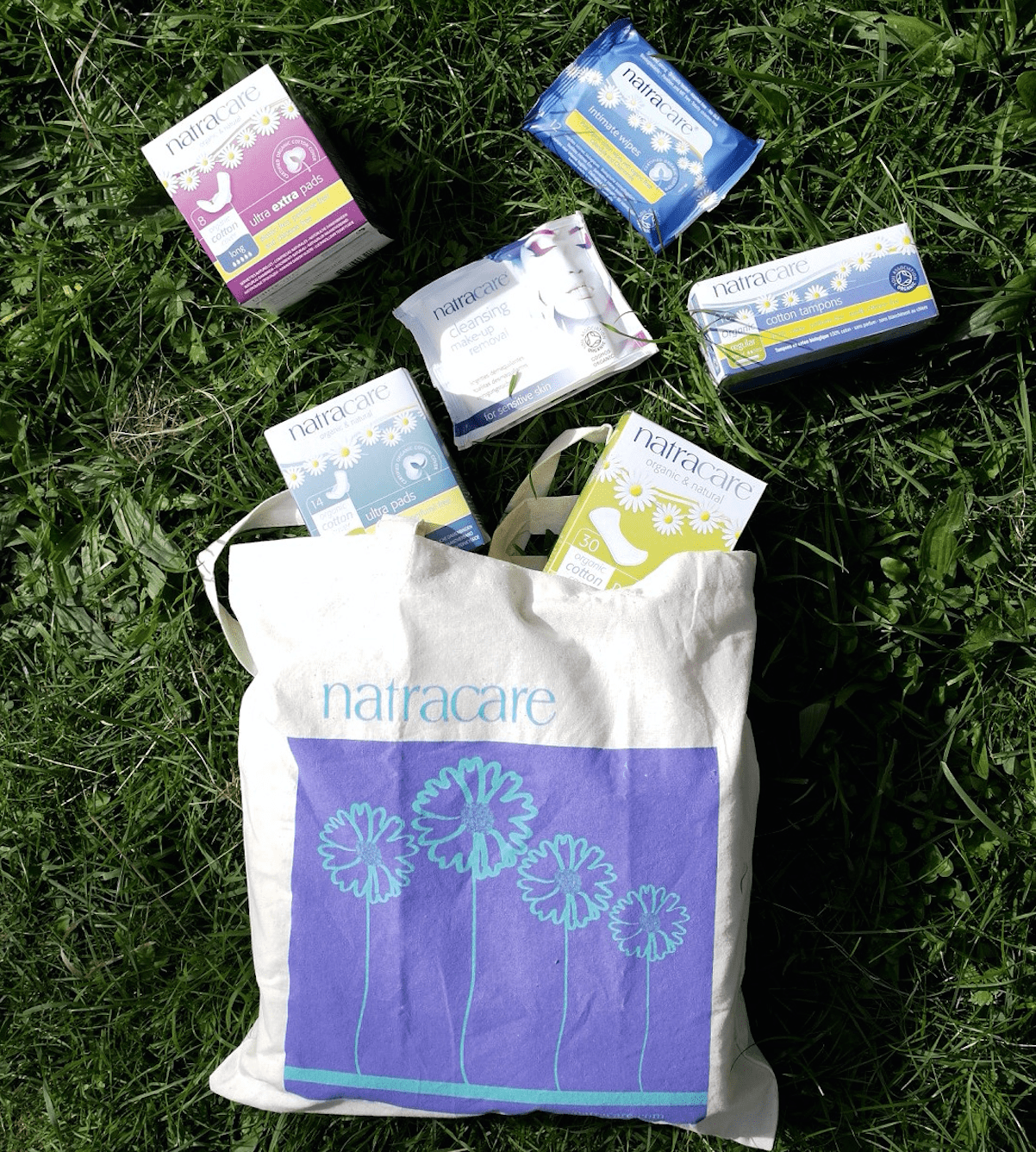
WANT TO WIN THIS NATRACARE GIFTBAG FULL OF PRODUCTS? SHARE THIS POST AND COMMENT HERE LETTING US KNOW WHEN YOU DO!
Final Word
It’s so easy to put our trust in companies that are out to make our lives more comfortable, but if they refuse to be transparent, then we in turn must become more informed consumers. Not only for our own health, but also for the health of generations women and young girls to come. The majority of women’s health products on the market today contain chemicals that can inflict a whole host of serious problems and complications, making it of the utmost importance that they be avoided. Thankfully, there are visionary companies out there that are challenging convention by producing safer, effective alternatives that are good for our bodies, as well as the environment. Make the change today – your health is too important not to.
Drop us a line and let us know your favorites!
Resources:
[1] https://www.usatoday.com/story/money/business/2017/03/24/feminine-hygiene-newest-consumer-battlefield/99532850/
[3] https://www.fda.gov/RegulatoryInformation/Guidances/ucm071781.htm
[4] https://www.fda.gov/AboutFDA/Transparency/Basics/ucm194468.htm
[5] http://www.cnn.com/2015/11/13/health/whats-in-your-pad-or-tampon
[6]https://www.fda.gov/scienceresearch/specialtopics/womenshealthresearch/ucm134825.htm
[7]http://web.archive.org/web/20150905165450/http://www.panna.org:80/resources/cotton
[8] http://thegreenmama.com/blog/greener-and-healthier-menstrual-cycle/
[9] http://www.cnn.com/2015/11/13/health/whats-in-your-pad-or-tampon/
[10] Historical Perspectives Reduced Incidence of Menstrual Toxic-Shock Syndrome — United States, 1980-1990. (1990). Retrieved from http://www.cdc.gov/mmwr/preview/mmwrhtml/00001651.htm
[11] http://www.huffingtonpost.com/dr-mercola/feminine-hygiene-products_b_3359581.html

